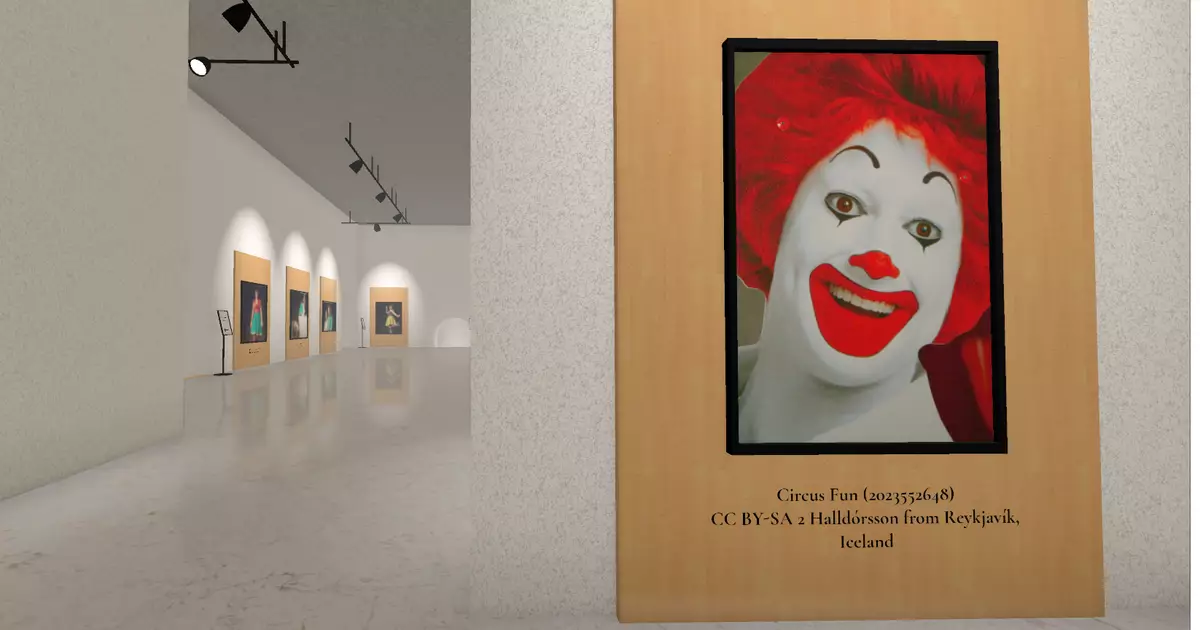In the digital age, experiences that blend education with entertainment are increasingly prevalent, capturing the fascination of users across the globe. One such innovation is the Museum of All Things—a remarkable creation that stems from the depths of Wikipedia’s expansive archives. Developed by Maya Claire using the Godot Engine, this virtual museum offers not just a platform for information retrieval, but an immersive space where the data transforms into what feels like an endless adventure. Accessible via download from Itch, this engaging experience allows users to dart through an almost limitless environment filled with visually curated exhibits compiled from Wikipedia entries.
The essence of the Museum of All Things lies in its unique design model: a hybrid between a racing simulator and an exploratory online game. Unlike traditional museum visits, where the path is often predetermined, this digital space invites free exploration. Players racing against themselves can navigate from one Wikipedia page to another by minimizing their clicks, transforming the process of learning into a competition against time. This duality enriches the experience—participants may find themselves delighting in small victories as they curve through the murky recesses of knowledge or colliding unceremoniously with gaps in their knowledge roads.
What’s particularly captivating is how the Museum dissects the notion of an exhibition. It richly populates its space by dynamically pulling and generating new exhibition rooms as explorers engage with individual topics. This serves as a conceptually fluid expansion and contraction of space, as each new discovery opens doors to innumerable facets of information.
The Museum operates on a fascinating juxtaposition—while its primary aim is to extol the virtues of Wikipedia and provide an avenue for learning, one might argue that its aesthetic charm and procedural generation (procgen) take precedence. The happenings within the Museum oscillate between a joyfully chaotic test of one’s curiosity and a disconcertingly labyrinthine journey through what could easily be interpreted as a ‘liminal death spiral.’ The grandiosity and expanse of its structure both beckon and bewilder visitors, who find themselves amidst repeated architectural motifs that have been rearranged yet again.
The air inside the Museum hums with an ambiance of quiet urgency, and the artful presentation—from polished wooden floors to elegantly displayed artifacts—creates an almost hypnotic atmosphere. As one traverses this virtual space, there exists a continual tension between the goals of information retrieval and the lure of aesthetic immersion. The experience can verge on the surreal, where the act of learning dissolves into an abstract journey of feelings and reflections, leaving visitors to question where the exhibit ends and their whims begin.
One of the most striking features of the Museum of All Things is its ability to communicate knowledge through playful design. Users are guided not by the traditional blue hyperlinks of Wikipedia but rather by whimsical signs and arrows, inviting them to delve into the depths of knowledge like explorers in a fantastical land. The design prompts a constant action-reaction cycle; users are encouraged to leap from one subject area to the next, leading to rich associations and unexpected insights.
Occasionally, visitors might hear ambient noises—perhaps a strained voice echoing through the artifice of the museum or soft background music—that pulse in sync with their discoveries. These effects further enhance the immersion, making navigation less a task and more an experience. The clever incorporation of auditory elements acts as an invisible guide through this fantastical maze, subtly pushing visitors toward new exhibits and unexpected journeys.
As users navigate through realms like “Butter Tea” to “Understanding Chewing,” they confront not only the encyclopedic knowledge housed within the museum but also their own cognitive boundaries. The experience becomes personal, evoking a reflection on the myriad of pathways one might take through information. Like the paths taken by the players themselves, the Museum of All Things expands and contracts—a boundless exploration simultaneously intimate and unimaginable.
The invitation remains: to dive into this digital marvel and make sense of its intricate web—resources await the curious, and perhaps, one might leave the Museum not just enriched, but transformed. In this space, how long visitors linger is dictated not merely by their pursuit of knowledge but by their waning sense of self. Will they conquer the maze, or will it ensnare them? The answer lies in the journey itself.

